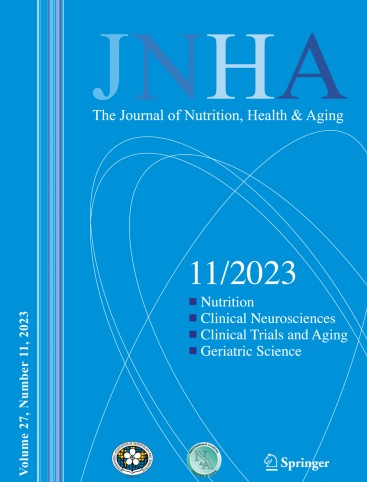Accelerated biological aging and risk of inflammatory bowel disease: A prospective study from 401,013 participants
IF 4.3
3区 医学
Q1 GERIATRICS & GERONTOLOGY
引用次数: 0
Abstract
Objectives
Relationship between biological aging and inflammatory bowel disease (IBD) remains unclear. We aimed to explore the associations of biological age and genetic predisposition with IBD and the predictive ability.
Methods
Biological age and genetic predisposition were measured by PhenoAge and the polygenic risk score (PRS), respectively. The hazard ratio (HR) and 95% confidence interval (CI) of PhenoAge and combined PRS for Crohn’s disease (CD) and ulcerative colitis (UC) were evaluated by Cox proportional hazards models. Additive interactions were examined to evaluate the joint effect. C statistic was employed to assess the predictive ability.
Results
During the follow-up period of 5,320,311 person-years of 401,013 participants, 2467 patients with UC and 1262 patients with CD were observed. PhenoAge showed a significant association with an increased risk of incident IBD. Each standard deviation of PhenoAge acceleration correlated with a 38% (95% CI: 34%–41%), 35% (95% CI: 30%–38%), and 46% (95% CI: 41%–51%) increased risk of IBD, UC, and CD, respectively. Joint effects and additive interactions were noted between PhenoAge and the PRS. Individuals with a high PRS and the highest PhenoAge acceleration had the highest risk for UC (HR: 9.16, 95% CI: 7.08–11.85) and CD (7.72, 6.05–9.86), respectively. Incorporating PhenoAge and the PRS could enhance the accuracy of predicting IBD, with a highest C statistic of 0.71 for UC and 0.72 for CD.
Conclusion
Accelerated biological aging is associated with an increased risk of IBD, particularly in individuals with high genetic predisposition. Identifying individuals with accelerated biological aging has significant implications for reducing IBD risk.
加速生物老化和炎症性肠病风险:一项来自401,013名参与者的前瞻性研究
目的生物衰老与炎症性肠病(IBD)之间的关系尚不清楚。我们的目的是探讨生物年龄和遗传易感性与IBD的关系及其预测能力。方法采用表型年龄法测定生物学年龄,采用多基因风险评分法测定遗传易感性。采用Cox比例风险模型评估PhenoAge和联合PRS对克罗恩病(CD)和溃疡性结肠炎(UC)的风险比(HR)和95%置信区间(CI)。考察了加性相互作用以评价联合效应。采用C统计量评价预测能力。结果在401,013名参与者的5,320,311人年的随访期间,观察到2467例UC患者和1262例CD患者。表型显示与IBD发病风险增加显著相关。PhenoAge加速的每个标准差分别与IBD、UC和CD风险增加38% (95% CI: 34%-41%)、35% (95% CI: 30%-38%)和46% (95% CI: 41%-51%)相关。表型age与PRS之间存在联合效应和加性相互作用。高PRS和高表型加速的个体UC和CD的风险最高(HR: 9.16, 95% CI: 7.08-11.85)。结合PhenoAge和PRS可以提高预测IBD的准确性,UC和cd的C统计值最高,分别为0.71和0.72。结论生物衰老加速与IBD的风险增加有关,特别是在高遗传易感性的个体中。识别生物老化加速的个体对降低IBD风险具有重要意义。
本文章由计算机程序翻译,如有差异,请以英文原文为准。
求助全文
约1分钟内获得全文
求助全文
来源期刊
CiteScore
7.80
自引率
3.40%
发文量
136
审稿时长
4-8 weeks
期刊介绍:
There is increasing scientific and clinical interest in the interactions of nutrition and health as part of the aging process. This interest is due to the important role that nutrition plays throughout the life span. This role affects the growth and development of the body during childhood, affects the risk of acute and chronic diseases, the maintenance of physiological processes and the biological process of aging. A major aim of "The Journal of Nutrition, Health & Aging" is to contribute to the improvement of knowledge regarding the relationships between nutrition and the aging process from birth to old age.

 求助内容:
求助内容: 应助结果提醒方式:
应助结果提醒方式:


